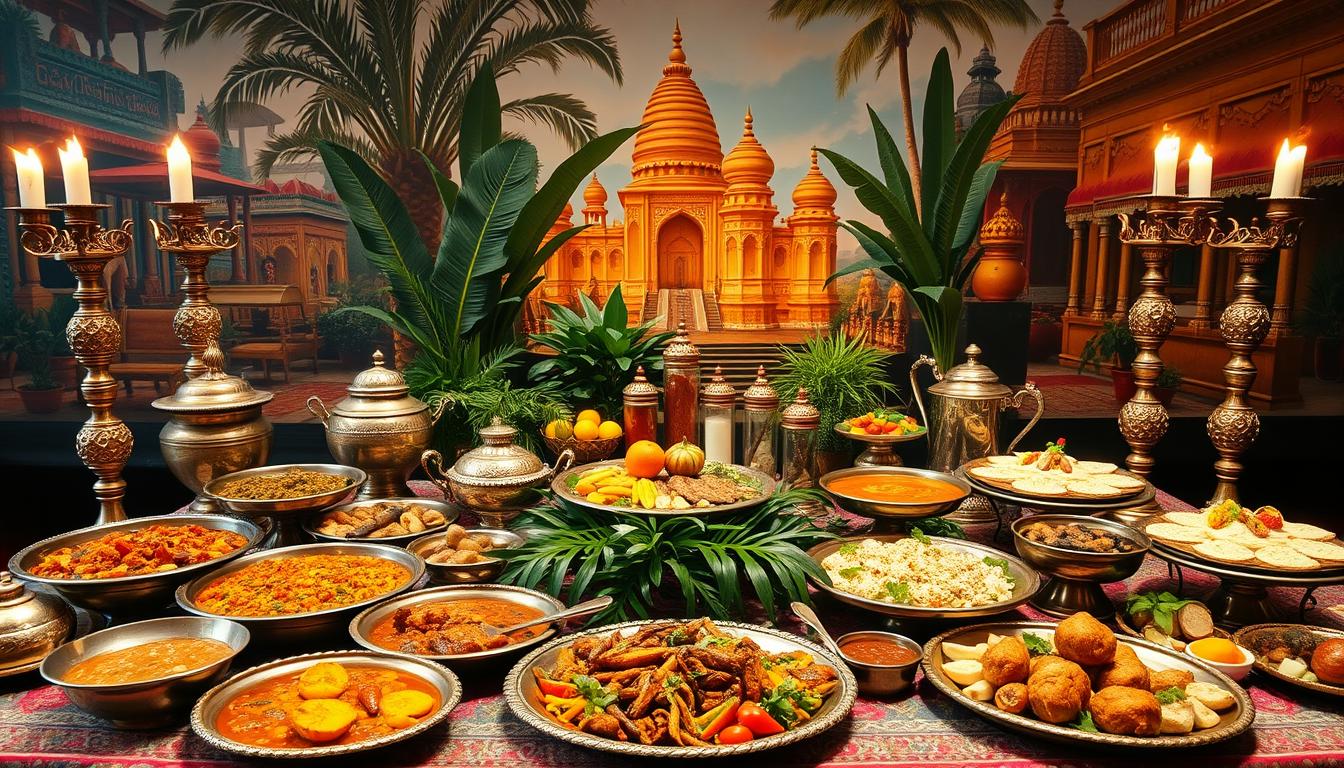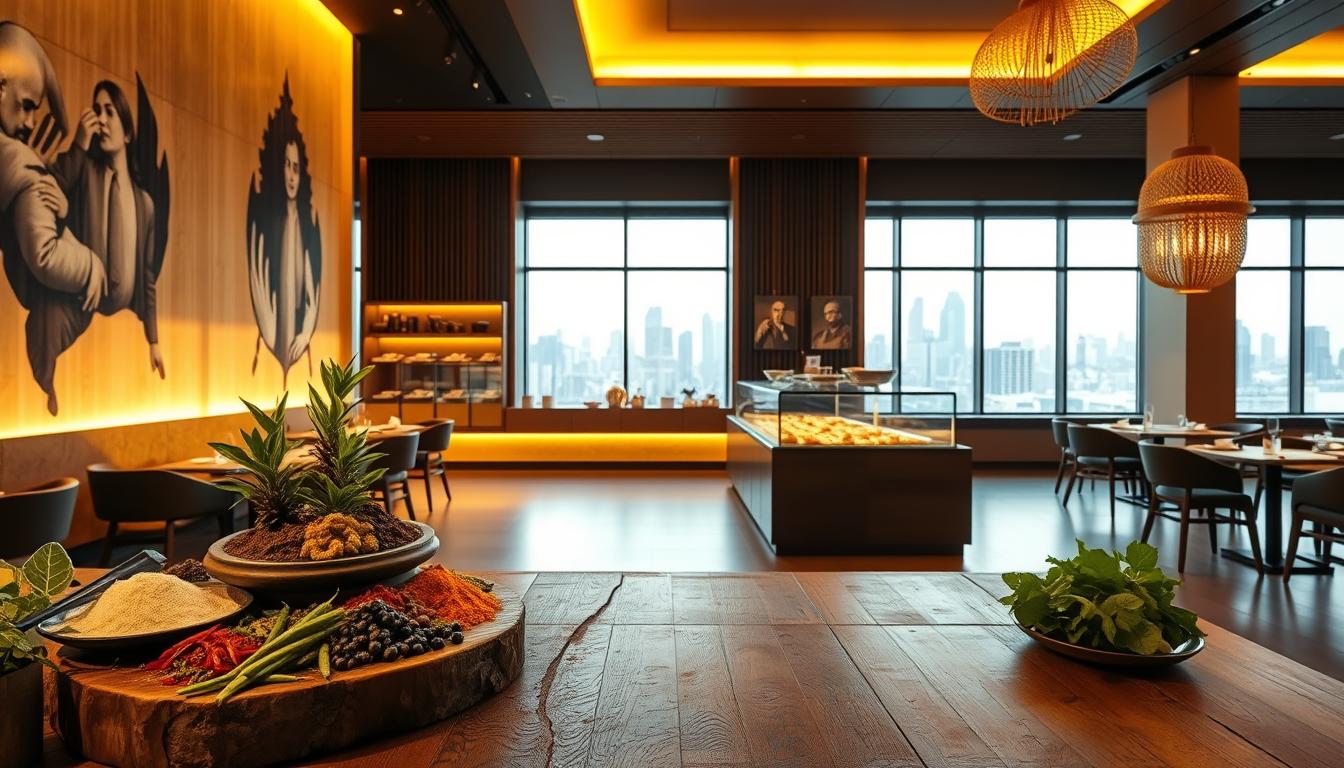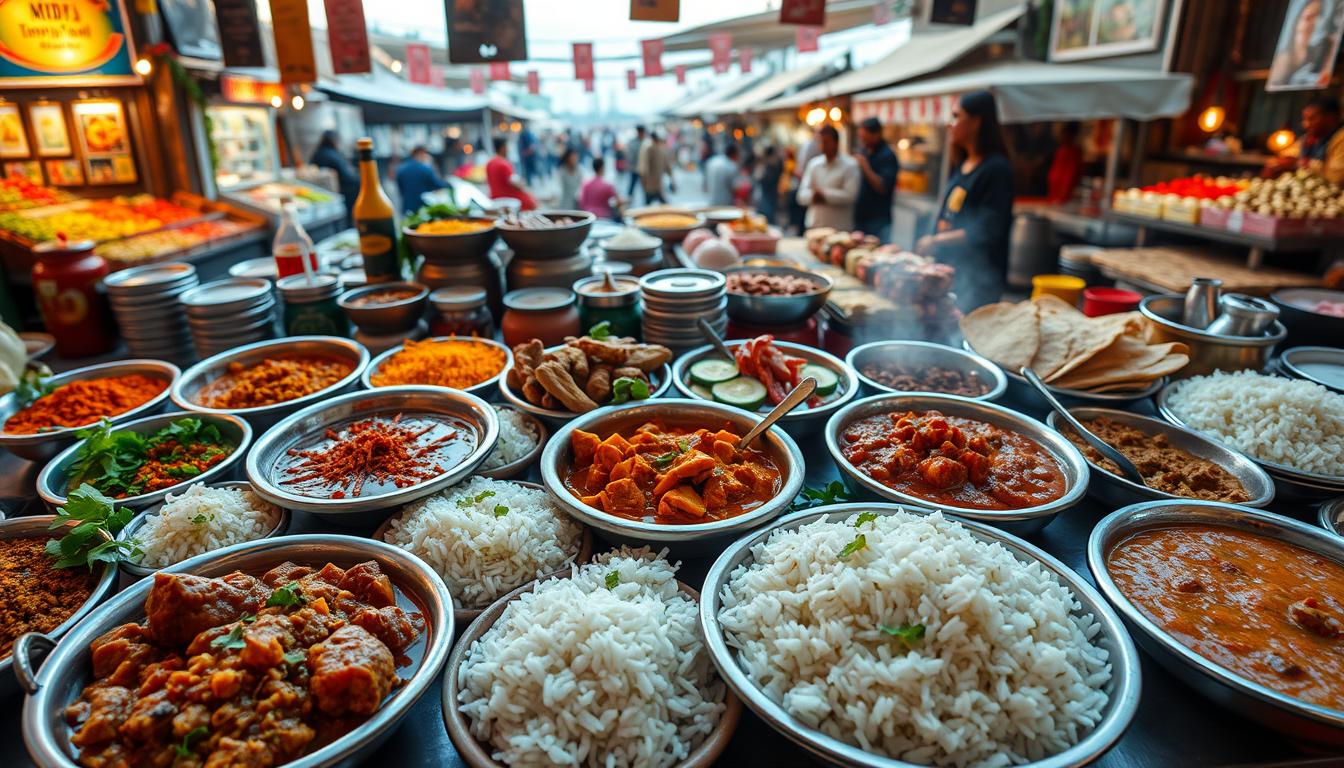A Culinary Journey Through India’s Regions
India is a land of diverse cuisines, with different regions offering unique flavors and cooking techniques. From the spicy curries of the south to the rich biryanis of the north, Indian cuisine is a reflection of the country’s rich cultural heritage.
The southern part of India is known for its use of coconut, tamarind, and spices, which gives its dishes a distinct flavor profile. The famous dosas and idlis of South India are a testament to the region’s love for fermented rice and lentil batter. In contrast, the northern regions are famous for their rich and creamy curries, often made with a variety of spices and herbs.
The eastern part of India, particularly West Bengal, is renowned for its love of fish and seafood. The region’s cuisine is characterized by the use of mustard oil and a variety of spices. The western region, on the other hand, is known for its vegetarian cuisine, with a focus on dhoklas, khandvi, and other snacks made from gram flour.
In conclusion, Indian cuisine is a diverse and vibrant reflection of the country’s rich cultural heritage. With its unique regional flavors and cooking techniques, Indian cuisine has something to offer for every palate.
| Region | Cuisine |
|---|---|
| South India | Spicy curries, dosas, idlis |
| North India | Rich and creamy curries, tandoori dishes |
| East India | Fish and seafood, mustard-based dishes |
| West India | Vegetarian cuisine, dhoklas, khandvi |

The Spice Symphony: Essential Ingredients and Techniques
Indian cooking is a symphony of flavors, brought together by a myriad of spices and ingredients. At the heart of this culinary tradition are spices that add depth, warmth, and complexity to dishes. Turmeric, cumin, coriander, and chili peppers are some of the key spices that form the backbone of Indian cuisine.
These spices are not just added randomly; they are carefully combined using various cooking techniques to create the distinctive flavors of Indian dishes. Techniques such as dum (steaming), bhunao (sautéing), and tadka (tempering) are fundamental to Indian cooking. Tadka, for instance, involves adding spices to hot oil or ghee to release their aromatic properties, enhancing the flavor of the dish.
The use of these spices and techniques varies across different regions in India, contributing to the rich diversity of Indian cuisine. As noted by food experts, “The art of Indian cooking lies in the balance of spices and the technique used to prepare a dish.” This balance is what makes Indian cuisine so unique and flavorful.
In Indian cooking, ingredients like turmeric are valued not only for their flavor but also for their medicinal properties. The combination of these ingredients with various cooking techniques results in dishes that are both nourishing and delicious.
To experience the true essence of Indian cuisine, it’s essential to understand the role of spices and cooking techniques. By mastering these elements, one can recreate the authentic flavors of India in their kitchen.
Must-Try Indian Dishes
Indian cuisine is a melting pot of diverse flavors and dishes, reflecting the country’s rich cultural heritage. From popular street food to complex curries, Indian cuisine has something to offer.
Some of the most popular Indian dishes include Butter Chicken, Naan Bread, and Tandoori Chicken. These dishes are not only delicious but also showcase the complexity and variety of Indian cuisine.
The diversity of Indian cuisine is reflected in its various regional specialties. From the spicy curries of the south to the rich biryanis of the north, each region has its unique flavor profile and cooking techniques.
- Biryani: A mixed rice dish made with aromatic spices and marinated meat or vegetables.
- Tandoori Chicken: A popular North Indian dish made by marinating chicken in yogurt and spices and cooking it in a tandoor.
- Palak Paneer: A creamy spinach curry made with paneer (Indian cheese) and spices.
Whether you’re a foodie or just looking to try something new, Indian cuisine has something to offer. With its rich flavors, diverse regional specialties, and complex cooking techniques, Indian cuisine is a culinary journey worth exploring.
The Cultural Significance of Indian Cuisine
Indian cuisine is a vibrant reflection of the country’s diverse cultural heritage. Meals are often seen as opportunities to strengthen family bonds and foster community ties. The use of aromatic spices, herbs, and other ingredients not only enhances the flavor of dishes but also adds to their medicinal and nutritional value.
The diversity of Indian cuisine is reflected in its various regional flavors and cooking techniques. From the spicy curries of the south to the rich, creamy dishes of the north, each region’s cuisine is a unique representation of its local ingredients and cultural traditions.
Modern Twists on Traditional Cuisine
Modern Indian cuisine is not just about traditional recipes; it’s about innovating with new ingredients and methods. Chefs are now experimenting with fusion cuisine, blending traditional Indian flavors with international tastes to create something entirely new.
The use of modern cooking techniques such as sous vide and molecular gastronomy is becoming increasingly popular. These techniques allow chefs to preserve the essence of traditional Indian dishes while presenting them in innovative ways.

One of the key aspects of modern Indian cuisine is the incorporation of local and seasonal ingredients. This not only supports local farmers but also ensures that the dishes are fresh and environmentally sustainable.
Popular Modern Indian Dishes
| Dish | Traditional Version | Modern Twist |
|---|---|---|
| Tandoori Chicken | Marinated chicken cooked in a tandoor | Tandoori chicken tacos with cucumber raita |
| Palak Paneer | Spinach curry with paneer | Palak paneer stuffed ravioli with garlic naan croutons |
| Samosas | Fried or baked pastries with spiced potatoes and peas | Samosa spring rolls with mint chutney dipping sauce |
The evolution of Indian cuisine is a reflection of its dynamic nature, adapting to new tastes and preferences while retaining its rich heritage. As modern Indian cuisine continues to evolve, it’s exciting to think about what’s to come next.
Conclusion
Indian cuisine is a rich and diverse reflection of the country’s culture and heritage, offering a unique culinary experience for every palate. With its complex spices and varied regional cuisines, Indian food has become a favorite among food enthusiasts worldwide.
From the aromatic biryanis of the south to the rich curries of the north, Indian cuisine is a true reflection of the country’s diverse cultural traditions. Whether you’re a seasoned foodie or just discovering the flavors of India, there’s always something new to explore in this vibrant and dynamic cuisine.
As we’ve seen, Indian cuisine is not just about food; it’s about the culture, tradition, and community that comes together to create a truly unforgettable dining experience. With its modern twists and traditional flavors, Indian cuisine continues to evolve and captivate audiences around the world.
FAQ
What are the main characteristics of North Indian cuisine?
North Indian cuisine is known for its rich and creamy curries, reflecting the region’s history and cultural influences. Popular dishes include butter chicken, naan bread, and tandoori chicken.
What are the staple ingredients in South Indian cuisine?
South Indian cuisine is characterized by its use of coconut, tamarind, and spices, resulting in bold flavors and aromas. Staple dishes include dosa, idli, and vada.
What are the essential spices used in Indian cooking?
Turmeric, cumin, coriander, and chili peppers are some of the key spices used in Indian cuisine, adding depth and complexity to various dishes.
What cooking techniques are commonly used in Indian cuisine?
Various cooking techniques such as dum (steaming), bhunao (sautéing), and tadka (tempering) are used to prepare Indian dishes, enhancing their flavors and textures.
How has Indian cuisine evolved over time?
Indian cuisine has evolved over thousands of years, influenced by various cultures and traditions, resulting in a diverse and complex reflection of the country’s rich cultural heritage.
What is the cultural significance of Indian cuisine?
Indian cuisine plays a significant role in the country’s culture, with food being an integral part of various celebrations and traditions, and continues to be a vital aspect of Modern Indian Cuisine.



